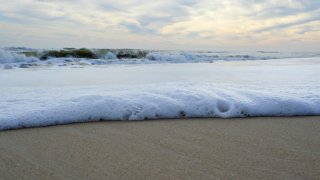
The National Parks Service has confirmed the discovery of an ancient crab fossil found along the shores of Assateague Island National Seashore.
Sharon Conn, a visitor to the area, found the fossil in early October on the Virginia portion of Assateague Island.
“It is very uncommon to find fossils of this nature. We have a very small number in our museum collection. That is what makes this discovery very exciting!” Liz Davis, chief of interpretation and education for Assateague Island National Seashore, told The Daily Times.
The parks service identified the rare blue crab fossil with the help of the Department of Paleobiology at the Smithsonian. Matthew Miller, museum specialist at the National Museum of Natural History in Washington tested the fossil to find out how it is. He concluded it is likely from the Pleistocene age about 2 million to 12,000 years ago.
We're making it easier for you to find stories that matter with our new newsletter — The 4Front. Sign up here and get news that is important for you to your inbox.
“The extra rock around it is a very well consolidated matrix that was so hard it didn’t readily erode,” the Smithsonian said in a statement to Assateague Island National Seashore. “The claw did erode a bit though — which is why it isn’t immediately distinguishable as a claw. The tips are gone and parts of the infilled area where the original flesh would have been has shown through, making the whole specimen look a bit odd.”
The fossil was found on public land and is therefore protected by the 2009 Paleontological Resources Preservation Act.
Davis told The Daily Times it is currently at the National Parks Service Toms Cove Visitor Center in Virginia.
Local
Washington, D.C., Maryland and Virginia local news, events and information
"We hope to have a small collection of fossils on display at the NPS Assateague Island Visitor Center in Maryland later in 2022,” Davis said.
Assateague Island National Seashore is a well-traveled destination for visitors to explore its beaches and trails on the ocean and bay. It's well-known for it's wild horse population and is located just south of Ocean City, just north of Chincoteague Island.



